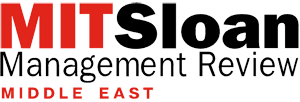The Case for Quiet Corporate Activism
Leaders concerned that they will be penalized for championing sustainability and diversity can still sustain their commitments.
Topics
News
- California’s Genspark Enters AI Unicorn Club with $200 Million Round
- OpenAI Taps Intel’s Sachin Katti to Build Compute Backbone for AGI
- Flipkart Brings Voice-Led Wholesale Ordering to WhatsApp with Sarvam AI
- Varun Berry Steps Down at Britannia, Rakshit Hargave to Take Over
- OpenAI Issues Warning on AI’s Acceleration From Inside the Fast Lane
- Intel Eyes Deeper India Play in Chips, AI

Not long ago, business leaders were under constant pressure to speak up on climate, diversity, or social justice. Making bold commitments and pledges was not only encouraged but demanded and, for a time, seen as a hallmark of good leadership.
Today, the mood has shifted dramatically. In the United States, a wave of “anti-woke” sentiment and political intervention has turned formerly celebrated ESG and DEI initiatives into sparks for controversy. Lawsuits, political campaigns, and regulatory threats have made even cautious statements on sustainability or inclusion feel risky.
And the fear is spreading. According to the 2025 Sustainability at a Crossroads survey, 71% of European sustainability experts now report strong backlash against corporate sustainability efforts, the second-highest rate globally after the U.S.1 That’s a striking shift for a region once seen as a global leader in sustainability. Across both the U.S. and European markets, senior executives have told us that they feel torn between their corporate values, the topics they personally care about, and mounting external pressure to fall silent.
How can companies continue to drive positive change without painting a target on their backs? For many business leaders, this is no longer a theoretical dilemma but a daily challenge with real consequences. Here, we’ll explore the rise of quiet corporate activism: a strategic, behind-the-scenes approach to sustaining social commitments in volatile times. We examine why this topic matters now more than ever and offer pragmatic strategies for leaders to keep advancing purpose-driven agendas discreetly yet effectively. Not all activism requires a spotlight. Some of the most profound change happens quietly.
The Backlash Behind the Retreat
In many ways, the retreat from public activism is a rational response to a new landscape shaped by both political hostility and economic uncertainty. In the U.S., government officials have actively discouraged the use of language about climate change and DEI by federal agencies, while state-level lawsuits and regulatory threats are targeting companies seen as too progressive. Such lawsuits, whether successful or not, serve as warning signs to others: Taking a visible stand now carries tangible risks, such as attracting issue-focused activist shareholders, political retaliation, reputational damage, and, of course, legal costs.
Corporate boardrooms feel these currents acutely. Even before the latest wave of backlash, U.S. companies were under pressure from conservative shareholder activists to drop DEI and climate initiatives. Florida Gov. Ron DeSantis went so far as to use the power of his office to punish Disney for speaking out on LGBTQ+ rights. Similarly, the attorney general for the state of Missouri filed suit against Starbucks, arguing that its DEI programs violate anti-discrimination laws. Although such claims are unlikely to win in court, the threat of legal battles, reputational damage, and punitive regulatory scrutiny creates a chilling effect. Many business leaders are capitulating to pressure and abandoning earlier commitments; many of those who have not yet done so worry that taking a vocal stand on polarizing topics will invite costly consequences.
And the pressure is now global. In Europe, once seen as a safe haven for progressive business, leading companies like Novartis, Roche, SAP, and UBS have begun rolling back diversity programs. Their reason? Rising U.S. political risks and new executive orders have forced a rethink at headquarters and beyond. At SAP’s 2025 annual meeting, CEO Christian Klein bluntly stated that international companies must comply with the legal requirements of many different countries and, for that reason, personal convictions become secondary.2
While companies may retreat from high-profile activism to avoid being penalized in an increasingly hostile landscape, this does not mean that they must abandon their goals. In reality, they need to adapt — quietly — to ensure continued access to capital, favorable regulatory treatment, and investor confidence. Many organizations are still pursuing diversity and sustainability, but they are doing so below the radar. This shift shows that leaders can still effect positive change — if they evolve their understanding of what it means to be an activist leader today.
Different Styles of Activism
Activist and author Bill Moyer defined four distinct roles that individuals can play to advance social change: citizen, rebel, change agent, and reformer.3 In times when the dominant power structure opposes their agenda, business leaders may need to shift away from the rebel role — someone who takes a high-profile stance against injustice — and lean more into the change agent and reformer roles. Change agents work behind the scenes to educate and organize for change, while reformers push to institutionalize those changes within established systems, whether through policies or corporate structure. Even companies that don’t identify as active protestors can adopt a citizen role, upholding widely shared values like fairness and inclusivity.
Pivoting to quiet activism can be a form of risk management that enables long-term progress.
Quiet activism from change agents and reformers can effect meaningful social change and, over time, may create the conditions for bigger policy changes. The focus is on discreetly doing the work and building alternative models and less about speaking out in the public sphere. A company engaging in quiet activism might implement progressive policies internally (like inclusive hiring, carbon reductions, or community investments) without communicating them, trusting that the impact speaks for itself.
In this scenario, companies are still working toward ESG, DEI, and sustainability goals, but with less external signaling. This phenomenon has been referred to as “greenhushing” in the sustainability context, where it connotes intentionally keeping a low profile on climate commitments to avoid accountability for them. While once criticized for lacking transparency, in today’s politically charged business environment, greenhushing has become a defensive strategy for companies that remain committed to sustainability but want to avoid a backlash.
This shift from loud to quiet doesn’t imply cowardice — it reflects strategic savvy. Given the context, pivoting to quiet activism can be a form of risk management that enables long-term progress. An obvious fear is that quiet retreat will kill these initiatives, but an alternative view is that quiet persistence might ensure that they survive until the storm passes. Of course, going quiet comes with its own risks: loss of public trust if stakeholders think corporate leaders have given up on values, demoralized employees who want to see bold leadership, and the moral quandary of staying silent on injustice. The challenge for leaders is to strike the right balance. This is where quiet activism comes in.

Five Strategies for Quiet Corporate Activism
Even if you believe in the power of quiet activism, how do you actually engage in it as a business leader? Here, we present five practical strategies for staying the course on DEI, sustainability, and social impact: choosing your battles, reframing your narrative, building internal support, harnessing informal alliances, and embedding values into operations. Consider them a toolkit for pragmatic idealists in the C-suite.
1. Choose your battles strategically. Wise leaders distinguish between issues or arenas where they can still be effective advocates publicly and those where pushing too hard could backfire and hinder the cause. This requires focusing their visible efforts on the most material and business-critical issues — those that align most closely with their company’s values, stakeholder priorities, and long-term competitiveness. By concentrating your own influence, you can protect your credibility and impact without exhausting your organizational or personal capital.
Consider Microsoft co-founder Bill Gates, who has long been a vocal advocate for climate action and has recently shifted his strategy: Instead of funding efforts to advocate for public policies in Washington, he has doubled down on innovation and investment. Gates recognized that in a hostile policy climate, his battle is better fought in labs and boardrooms than on Capitol Hill. By funneling resources into ventures like clean-energy startups, battery technologies, and climate R&D, he continues to advance decarbonization but sidesteps the political roadblocks.
In your role as a business leader, choosing your battles might mean focusing your sustainability efforts on your own operations, where you have control. Strategic patience and focus are key. Save your political capital for where and when it truly counts.
2. Reframe without retreating. One of the simplest yet most powerful approaches to quiet activism is changing the language you use. Avoid politically charged terms and find other ways to articulate the same goals. Many companies are already deploying this tactic to sustain momentum on DEI and sustainability without triggering a backlash. Rather than scrapping their diversity efforts, some are rebranding and reframing them. This requires finesse: The most effective leaders find language that inspires employees and reassures stakeholders while offering critics little room for attack.
Costco is a case in point. While numerous retailers were abandoning or downscaling DEI initiatives under pressure in 2024, Costco’s board doubled down on them when it came under attack, and it mounted a robust defense of the business value of inclusion. Costco switched to using more broadly appealing language, renaming its Diversity and Inclusion department to People and Communities. In messaging to shareholders that eschewed controversial buzzwords, Costco’s board emphasized core principles (“We welcome members from all walks of life and backgrounds”) and business benefits (a diverse workforce “helps bring originality and creativity” to serving customers). Costco’s shareholders overwhelmingly accepted the board’s recommendation to stay the course. By reframing DEI as an issue of respect, talent, and community, Costco neutralized detractors and maintained its programs. This approach is replicable. If “climate change” is contentious, talk about energy efficiency, innovation, and risk management — business imperatives that are aligned with climate goals.
Reframing is not meant to deceive; it’s about finding language that focuses on common ground and to which different target audiences will be receptive. By localizing your narrative in terms of widely shared values, you make it easier for the majority of employees, customers, and investors to support the work and harder for critics to rally opposition. In essence, you’re changing the narrative without changing your mission, and that can make all the difference in being able to quietly continue with it.
3. Build support inside the organization. To sustain social commitments when external winds are harsh, leaders need to foster strong internal alignment. That means rallying employees, the management team, and close partners around the organization’s values and ensuring that the commitment won’t erode just because efforts have become less visible. This might involve internal campaigns, training, or dialogues that keep purpose on the agenda even if it’s low-key. Research shows that employees, especially those in the younger generations, crave value alignment: Eighty-seven percent of Generation Z and millennials surveyed said they’d leave a job for one that better matched their values.4 Use that to your advantage: A workforce that believes in the mission will carry it forward, even if communication has to be less vocal for a time. This goes beyond senior leadership. Real momentum comes from empowering internal champions at all levels who can keep purpose and progress alive when public messaging is muted.
One of the simplest yet most powerful approaches to quiet activism is changing the language you use.
GEA does this by engaging its employees in “sustainathons,” internal innovation challenges where diverse teams tackle real sustainability problems together. Similarly, Siemens empowers employees through its global Sustainability Ambassador program. These ambassadors act as multipliers within the organization by raising awareness, organizing local sustainability activities, and sharing practical solutions and best practices across business units. Leaders can also host reverse town halls: discreet, employee-led sessions where staff members share candid feedback and highlight where progress is still happening behind the scenes. Efforts like these create momentum and ownership from within.
In short, notice which employees are committed, and invite them to help shape what comes next, whether through informal working groups, project teams, or grassroots networks. Give these employees space to raise tough questions, share progress, or surface frustrations. This will enable you to keep the mission alive and invest in a resilient, values-driven corporate culture.
4. Draw on informal alliances. When public advocacy brings risk, the real power often shifts out of sight. Informal alliances such as peer-to-peer learning communities, confidential industry groups, or quiet coalitions allow companies to share best practices, coordinate responses to political pressures, and collectively strengthen their resolve. Partnerships with nongovernmental organizations (NGOs) or community organizations can amplify your impact on the ground without requiring you to take center stage. By having a broad base of support and shared effort, your activism is less about sticking your neck out alone and more about many hands fortifying the work.
For example, IMD convenes a group of chief sustainability officers operating under the Chatham House Rule (participants can use the information they receive but not reveal its source or the identities of other participants). In these meetings, executives are able to openly share real strategies and setbacks in a confidential space. The environment fosters honest learning, accelerates peer adoption, and quietly harmonizes expectations. Similarly, in organizations like the World Business Council for Sustainable Development, executives collaborate on sensitive topics in private working groups before anything is made public. In these quiet alliances, real learning happens and strategies gain traction, all without making headlines or drawing unwanted scrutiny.
What this means for you is that making time for confidential peer conversations, whether in cross-company groups, industry circles, or trusted roundtables, can be a crucial way to keep learning, share challenges, and quietly align on complex issues. By investing in these low-profile relationships, you can stay ahead of risk and still co-shape and co-initiate progress.
5. Embed values in operations. Perhaps the most powerful form of quiet activism is when a company so thoroughly embeds its social and environmental values into its day-to-day operations and structure that it no longer relies on special initiatives. This is the quietest activism of all, where purpose becomes so routine and operationalized that it no longer attracts attention, yet it steadily shapes outcomes over time. When leaders make the responsible choice because it’s part of their business DNA, the decision logic is baked into how the company runs and may not even be recognized as activism.
IBM quietly began a supplier diversity program in the 1960s, long before doing so was trendy, and today the billions of dollars it spends with diverse suppliers is simply the way it does business. It’s an embedded practice that steadily advanced economic inclusion, even when public focus waned. Embedding values can also mean designing products and services for underserved communities; if those products succeed, the social impact follows. Similarly, if you were to integrate sustainability into facilities management and logistics — through a policy that all new buildings will be green-certified or that logistics must optimize for fuel efficiency, for example — customers might not notice, but you would be persistently cutting emissions.
The beauty of embedding is that when prosocial norms are structural, leadership changes or trending issues are less likely to derail them. It’s simply “how we do things here.” Over time, this can actually give you the confidence to be more public, because you know it’s not just words: The substance is solidly in place.
Finally, be patient and sustain your energy for a long-term commitment. All activism is a marathon, not a sprint. It’s easy to get discouraged by setbacks or slow progress, so cultivate patience and resilience. Understand that change often follows a jagged line, with periods of resistance and regression followed by renewed progress. Corporate sustainability movements have seen this ebb and flow over decades. These cycles are inevitable. The key is not to overreact to the down cycles.
To prevent mission drift internally, demonstrate to your team through your words and actions that the commitment is long term. Business leaders can take heart that persistent efforts pay off, especially when aligned with underlying social trends (and demographics suggest that diversity and sustainability will only grow in importance). Continue measuring progress on internal dashboards. Celebrate incremental wins with your team to sustain morale. When external conditions improve, you can dial up the volume again. In the grand scheme of things, staying consistently committed will earn your company credibility and trust.
Practicing quiet activism requires a different sort of courage than speaking out: It’s the courage to act without applause, to persist without constant validation, and to do what is right without regulatory pressure. It’s making the calculated decision that a lower profile now can safeguard real progress that would be lost by charging headlong into a fight you couldn’t win. Whether it’s reframing your language, fortifying your internal culture, or channeling your influence through low-key avenues, there are options to keep moving forward. As Martin Luther King Jr. said: “If you can’t fly, run. If you can’t run, walk. If you can’t walk, crawl. But by all means, keep moving.”
References
1. “Sustainability at a Crossroads,” PDF file (GlobeScan, ERM Sustainability Institute, and Volans, July 2025), https://globescan.com.
2. C. Kerkmann, “So rechtfertigt SAP-Chef Klein seine Diversitätspolitik,” Handelsblatt, May 14, 2025, www.handelsblatt.com.
3. B. Moyer, J. McAllister, M.L. Finley, et al., “Doing Democracy: The MAP Model for Organizing Social Movements” (New Society Publishers, 2001).
4. J. Graff, “Why Strong Company Values Are Essential for Attracting the Next Generation of Professionals,” World Economic Forum, April 19, 2023, www.weforum.org.




